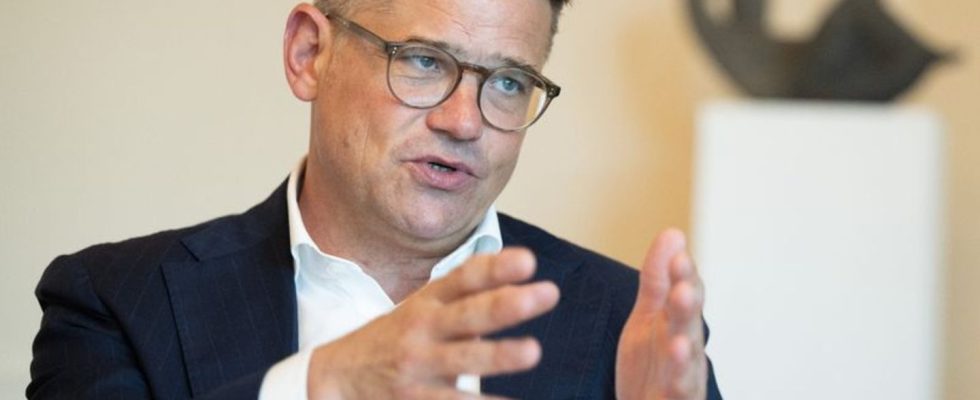Choose
Rhine open to various possible coalitions in Hesse
Boris Rhein is open to various possible coalitions. photo
© Boris Roessler/dpa
The state elections in Hesse are approaching – and with them the question: Which coalition could there be in Wiesbaden in the future? The Prime Minister shows sympathies in several directions.
Around two weeks before the Hesse state elections, Hesse’s Prime Minister Boris Rhein (CDU) is open to various possible coalitions. The alliance with the Greens is “very constructive, very trusting” and continues to work very well even in the election campaign, he said in an interview with the German Press Agency in Wiesbaden. But he has always maintained contact with the SPD and there are “similar experiences as a people’s party”. “And there are certainly some things in common,” he said Rhine.
The head of government confirmed that he respects and values the Greens as partners – including the people. “But any cross-camp coalition is always a real challenge.” Such alliances led to many compromises. “And a lot of compromises always lead to one or two edges and one or two corners being sanded off in the compromise.” This is not without danger in a democracy, warned the CDU state chairman. “You have to be very careful that you stick to your core program. We succeeded.”
In a coalition after the state elections on October 8th, the CDU will prefer the partner with whom it can achieve most of its key points, confirmed Rhein. “My wish, of course, and that is also our effort, is that no coalition can be formed without us.”
“If the traffic light parties can form a traffic light, they will also form a traffic light in Hesse, no matter what lead the CDU has,” he said. “And that’s exactly what needs to be prevented.” Rhein called on the Hessian FDP to position itself clearly as to whether it is available for a traffic light or not. “The economically liberal FDP voter does not want to experience the theater that is taking place at the federal level because this coalition is simply too heterogeneous,” said Rhein. Black and yellow, on the other hand, is “not a model of the past,” explained Rhein. He experienced this coalition as working particularly well.

